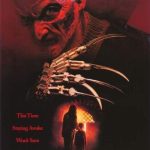Man on Fire (2004)

Released in 2004, Man on Fire is a gripping action-thriller directed by Tony Scott that explores themes of vengeance, sacrifice, and redemption. Starring the formidable Denzel Washington in one of his most iconic roles, this film is a heart-pounding journey of a man on the edge, pushed by the brutal world around him.
Set in the backdrop of Mexico City, where kidnappings are rampant, Man on Fire follows the story of John Creasy (Denzel Washington), a burnt-out former CIA operative and bodyguard, who is hired to protect a young girl, Lupita Ramos (played by Dakota Fanning), the daughter of a wealthy Mexican businessman. Creasy, hardened by his dark past and emotionally detached, takes on the job with little interest. However, as he bonds with Lupita, a touching and unlikely friendship forms. She begins to break through his hardened exterior, rekindling a sense of purpose in Creasy’s life.
The turning point of the film arrives when Lupita is kidnapped in a well-coordinated, violent abduction. Devastated and enraged, Creasy vows to take down everyone involved in the crime. What ensues is a relentless, intense campaign of vengeance as Creasy moves through the city’s dangerous criminal underworld, leaving no stone unturned in his quest to find Lupita. Fueled by a sense of justice and deep-seated guilt, Creasy’s journey becomes one of ruthless destruction, pushing him to his physical and emotional limits.

Denzel Washington delivers a powerhouse performance, portraying Creasy’s transformation from a broken, self-destructive man to a fiercely determined protector. His nuanced portrayal of a man battling his own demons while committing acts of brutal violence for the sake of redemption is both raw and compelling. Dakota Fanning, despite her young age, shines as the innocent and precocious Lupita, whose relationship with Creasy becomes the emotional core of the film.
The cinematography by Paul Cameron adds a gritty, tense atmosphere to the film, with Tony Scott’s signature fast-paced, stylized direction keeping the audience on edge. The action sequences are brutal and unflinching, perfectly complementing the emotional depth of the story. The film’s use of color, lighting, and frenetic editing captures the chaos and danger of Creasy’s world.
In addition to its heart-pounding action, Man on Fire explores deeper themes of redemption and the lengths to which someone will go to find peace. The movie delves into the moral complexities of vengeance, showing the toll it takes on both the body and soul. The bond between Creasy and Lupita adds layers of humanity and tenderness to a narrative otherwise filled with violence and loss.
The film’s score, composed by Harry Gregson-Williams, further enhances the emotional weight, blending haunting melodies with intense, adrenaline-pumping tracks that mirror Creasy’s descent into the world of violence and his fight for redemption.
Man on Fire is more than just a revenge thriller. It is a character-driven story that asks questions about justice, morality, and the possibility of redemption in a cruel, unforgiving world. With unforgettable performances, high-octane action, and a gripping narrative, Man on Fire has cemented its place as a classic in the action genre, resonating with audiences long after the credits roll.
Suggested videos for you:











